Theodore Lowe, Ap #867-859 Sit Rd, Azusa New York

Theodore Lowe, Ap #867-859 Sit Rd, Azusa New York
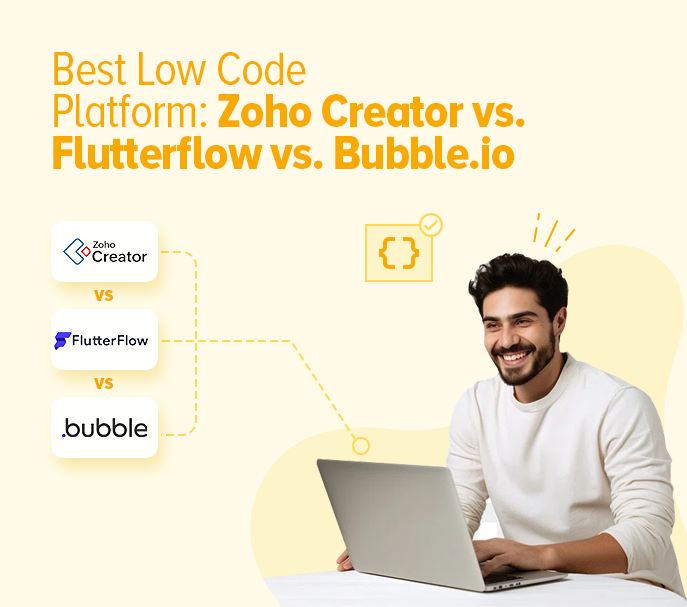
Mobile application development is no longer what it used to be. Brands worldwide are deploying newer apps that are loaded with features and functionality, faster and without too much investment. And what’s making that possible? It’s a low-code platform. These excellent low-code platforms have transformed the way applications are created, dramatically cutting out traditional and complex software development. With easy-to-use visual interfaces, pre-built templates, and drag-and-drop builders, low-code development platforms allow businesses to create apps without the need for specialized skills. It democratizes app development, enabling not just professionals but also non-technical users without specialized skills to create feature-rich, robust apps.

With extended and expensive software development costs due to rising labor costs, traditional software development has been finding it challenging to keep pace with the Minimum Viable Product ecosystem. Enter low-code platforms that have cut short the software development process, allowing enterprises and startups to build and roll-out apps faster and with lesser hassle. This spurs innovation, helps build a competitive edge, and allows brands to respond to customer needs faster.
As per Gartner, the worldwide market for the low-code development could touch USD 31.94 billion by 2024 and will accelerate the adoption of low-code technologies right into 2026.
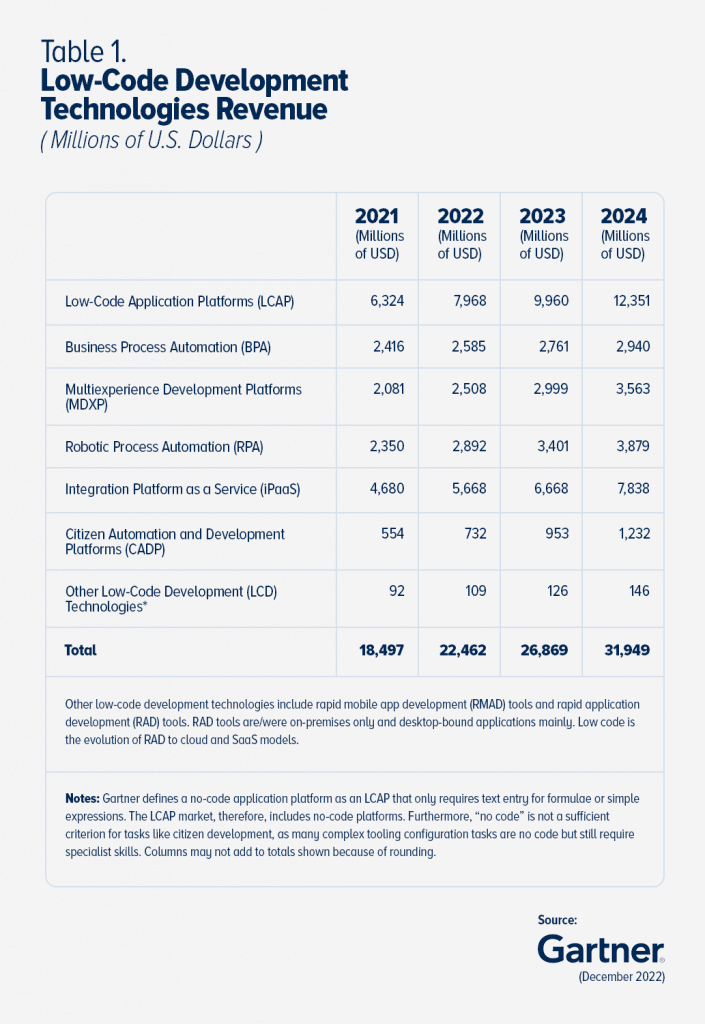
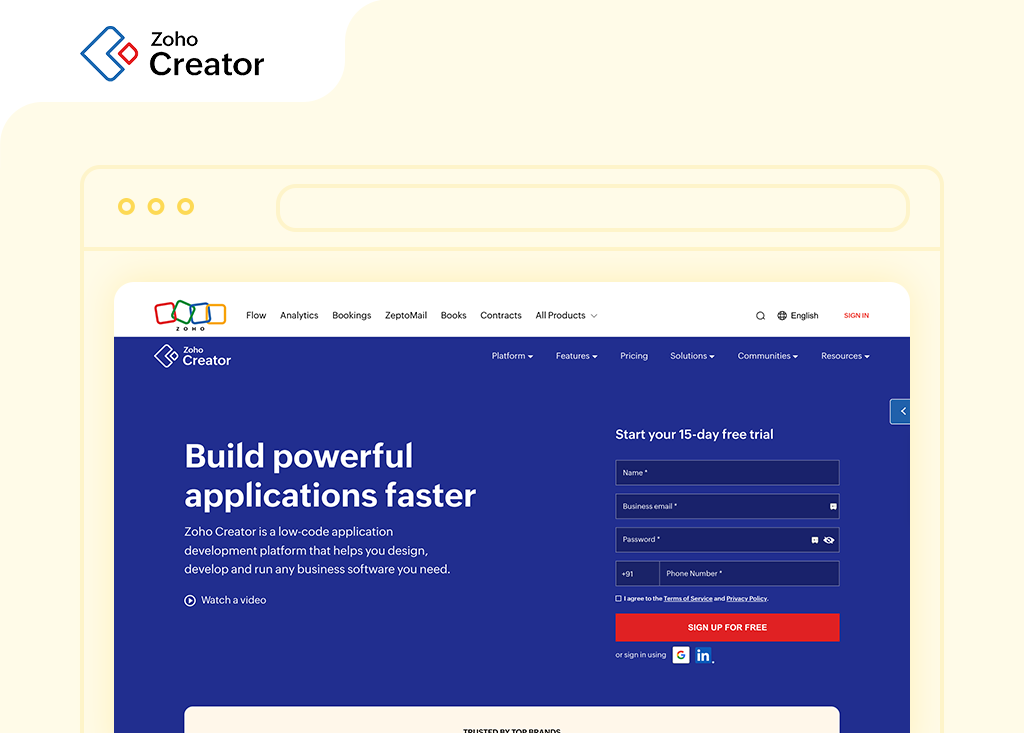
Zoho Creator, launched in 2006, is a part of Zoho’s larger suite of business apps. Positioned as an all-in-one development platform, Zoho Creator was among the first-ever low-code development platforms. Today it has evolved into a robust tool that allows even small and medium businesses, that require apps, to create single or multi-user apps that seamlessly integrate with their data and workflows.
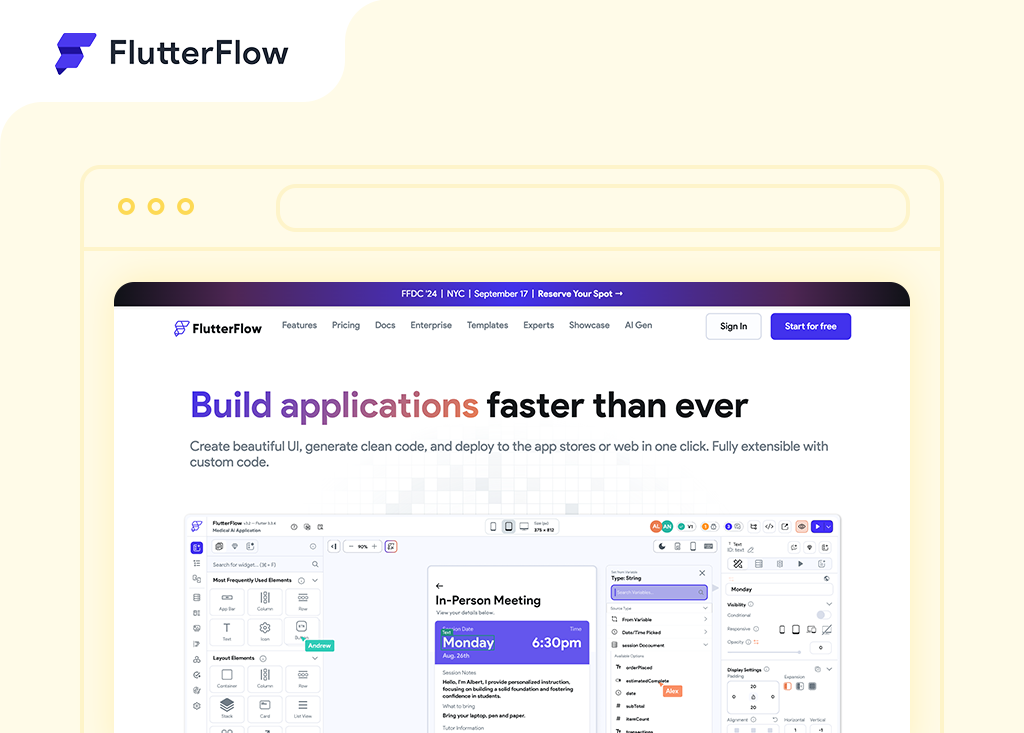
Flutterflow, based on Google’s Flutter, hit the ground in 2021, with attractive features like a drag-and-drop UI and widgets, to address the need for a visual development platform that could make app development accessible to non-coders and designers. It filled the need for a platform that could allow developers to build natively compiled apps for different platforms using the same codebase for both iOS and Android app stores.
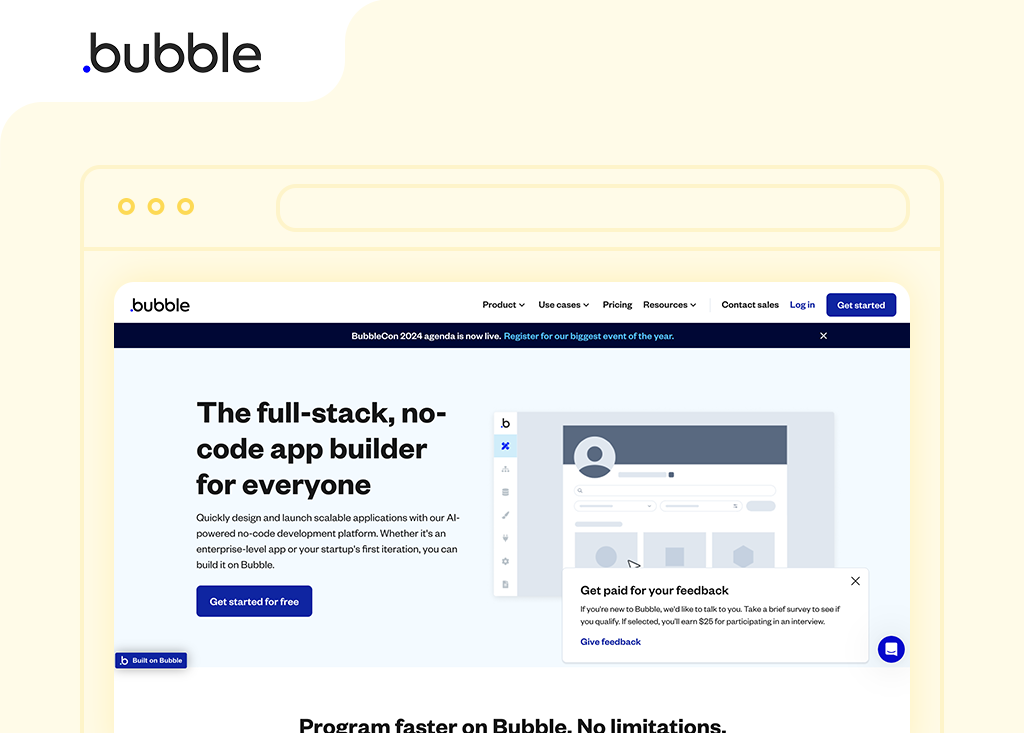
Bubble.io, a visual programming platform, was introduced in 2012 with the objective of code-free programming. Today it has become one of the most popular no-code platforms, particularly among entrepreneurs and startups who can now create amazing web apps without writing a single line of code. Bubble.io is known for its drag and drop software development features that allow users to create with pixel-perfect precision. Adaptive layouts and animations can be used to bring your website to life. Users can tell the software what should happen when visitors interact with the application.
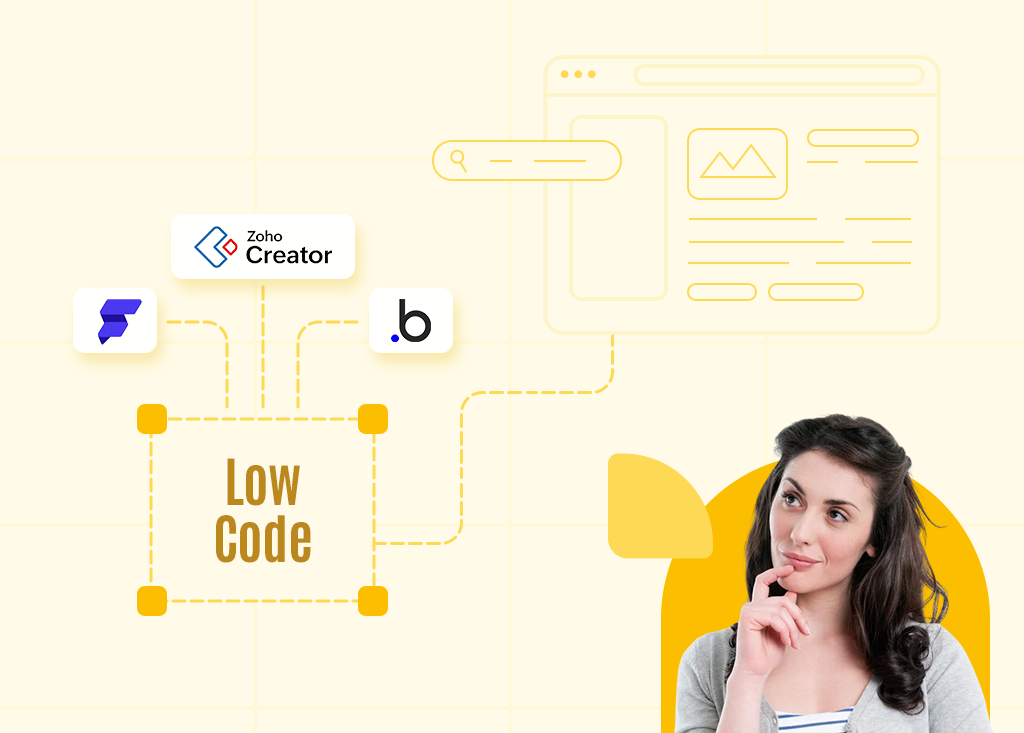
| Criterion | Zoho Creator | Flutterflow | Bubble.io |
| Ease of Use | Designed for business users. No technical expertise required. | Designer-friendly approach for attractive interfaces. Requires familiarity with Flutter. | Requires good knowledge of the platform so users can avail of all the features. |
| Customization & Flexibility | Excellent in business logic and workflow automation, but inflexible in design customization. | High level of customization, especially for design. Allows building of cross-platform apps. | Maximum design freedom. Easy to create complex, custom apps. But users need deep knowledge of logic and database design. |
| Integration Capabilities | Integrates easily with third-party business tools as well as Zoho apps. | Integrates well with Firebase but has some limitations when integrating with other third-party services. | Extensive integration capabilities with various APIs, services, and databases, including Google, Stripe, and Mailchimp. |
| Performance & Scalability | Robust enough for SMEs but has scalability issues with the complex needs of large enterprises and applications. | Performs well for applications that need to scale but is dependent on external services like Firebase. | Easy to scale but needs performance optimization for large applications to avoid slow performance. |
| Developer Community | Strong business-oriented community, extensive documentation, and support. | Rapidly growing community of developers and designers. Wide range of tutorials, forums, and resources. | Extensive and active community, with a huge repository of tutorials, forums, and user-generated content. |
| Value for Money | Competitively priced making it ideal for SMEs. Integration with the Zoho ecosystem gives more value for money spent. | Budget friendly option for developers and start-ups. Integration with Firebase adds to the value for money. | Not competitively priced, but its extensive features and flexibility justify the higher cost for businesses requiring a powerful customizable platform. |
| Platforms Supported | Mac, Linux, Android, Windows, iOS, SaaS/ Web | Mac, Linux, Android, Windows | SaaS/ Web |
| Support | Phone, 24×7 chat, online | Online | Online |
| Pricing | Free trial $8 per user/month – $25 per user/month depending on plan selected | Free version with basic features, free trial $30 per user/month – $70 per user/month depending on plan selected | Free version $29 per user/month – $119 per user/month depending on plan selected $349/month for a team |
| Training | Documentation, webinars, live online | Documentation | Documentation, webinars |
| Ideal for | Business software, self-service client portals, enterprise apps and tools, core systems | Mobile, web, and desktop apps, Rapid MVP development | Responsive web and mobile apps and tools with heavy visual creative elements |
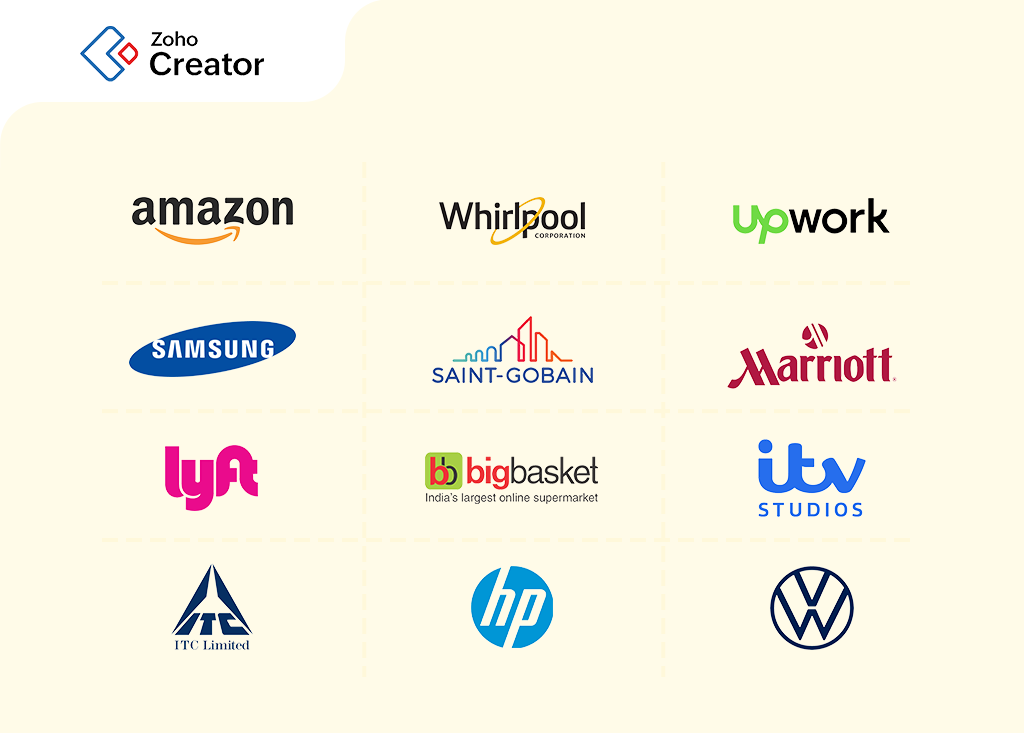
Many businesses have successfully built and scaled their operations using Zoho Creator. Amazon, Whirlpool, Upwork Global, Samsung, ITC, Marriott, HP, Volkswagen, Lyft, ITV Studios, and Saint-Gobain are some prominent brands that use Zoho Creator for digital transformation. In fact, BigBasket, a leading online grocer, has been using Zoho Creator for years, and claims to have saved more than USD 300k by using the platform. deSIAM, global brand specializing in authentic Thai ingredients and meals, has cut labor costs by 50% with custom applications built on Zoho Creator.
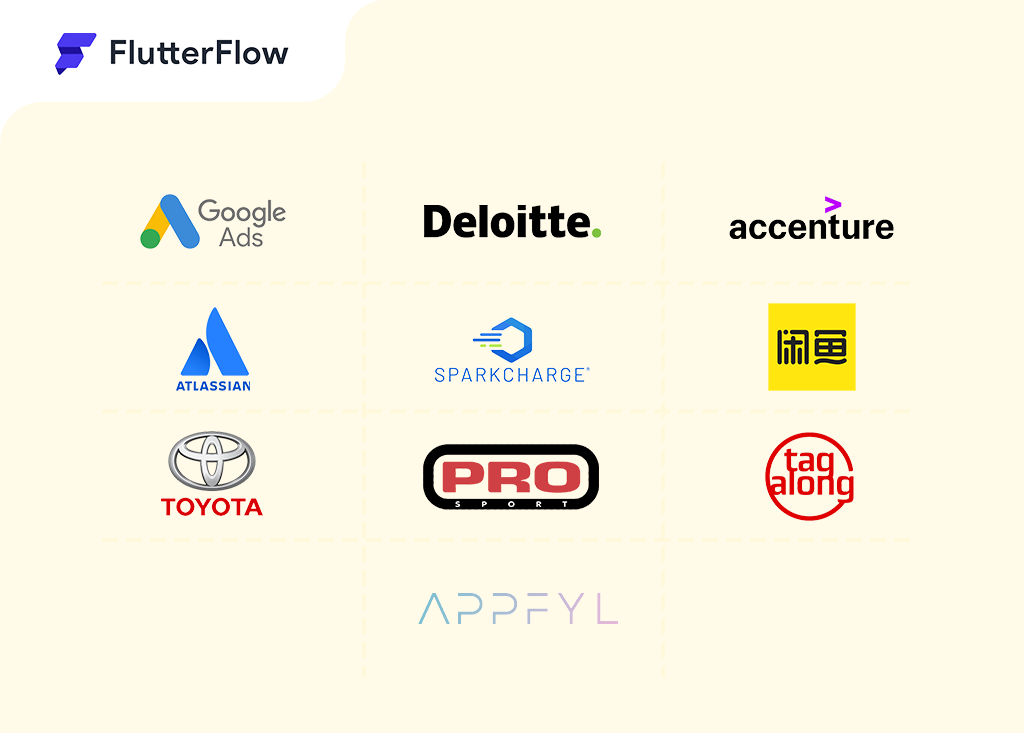
Startups and developers have used Flutterflow to quickly prototype and launch mobile applications. Some great examples of leading brands using Flutterflow include Google Ads, Deloitte, Accenture, Atlassian, Sparkcharge, Xianyu by Alibaba, TotoyAI, ProU Sports, Tagalong, Appfyl, and other such apps that use AI integration and need faster rollouts across multiple platforms.
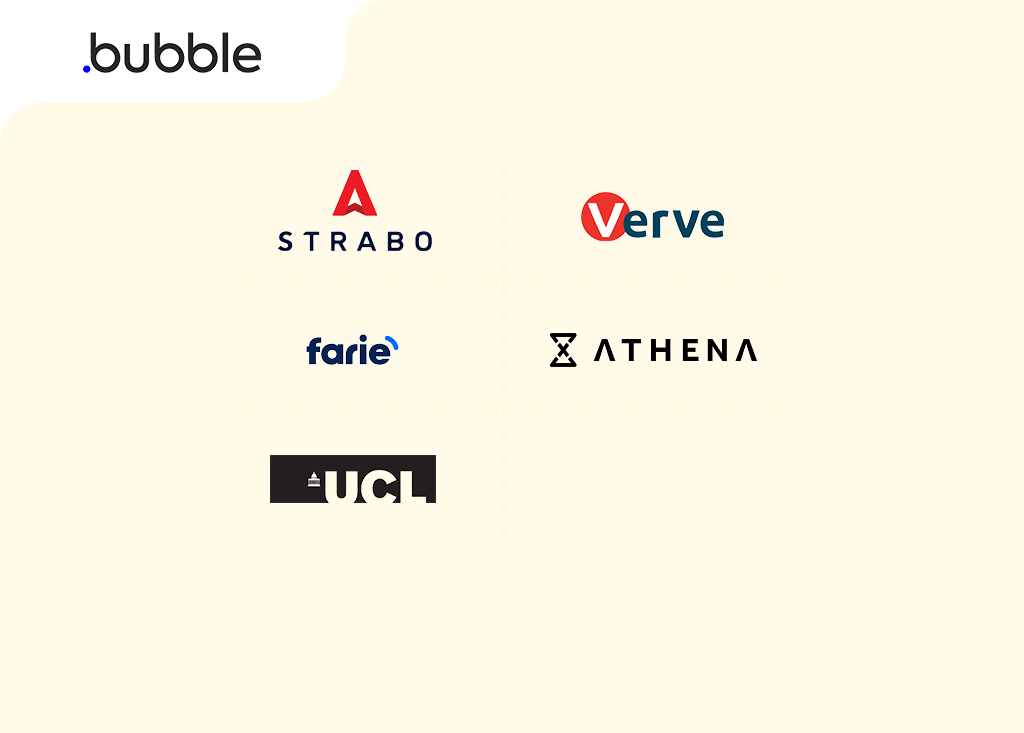
Bubble.io has been instrumental in the success of many startups, particularly in the tech space. Feature-rich apps like Strabo, Verve, Athena, Farie, UCL Medical School, and many others which require attractive design elements and heavy-duty processing and networking power have been built on Bubble.
| Pros | Cons | |
| Zoho Creator | User-friendly Strong integration with other tools Cost-effective | Limited customization of designs Glitches with very complex apps |
| Flutterflow | High level of UI customization Seamless Firebase integration Code export | High learning curve for non-designers Limited integration with non-Google services |
| Bubble.io | Highest design freedom among all three Extensive plugin marketplace Highly customizable | High learning curve for non-designers Expensive |
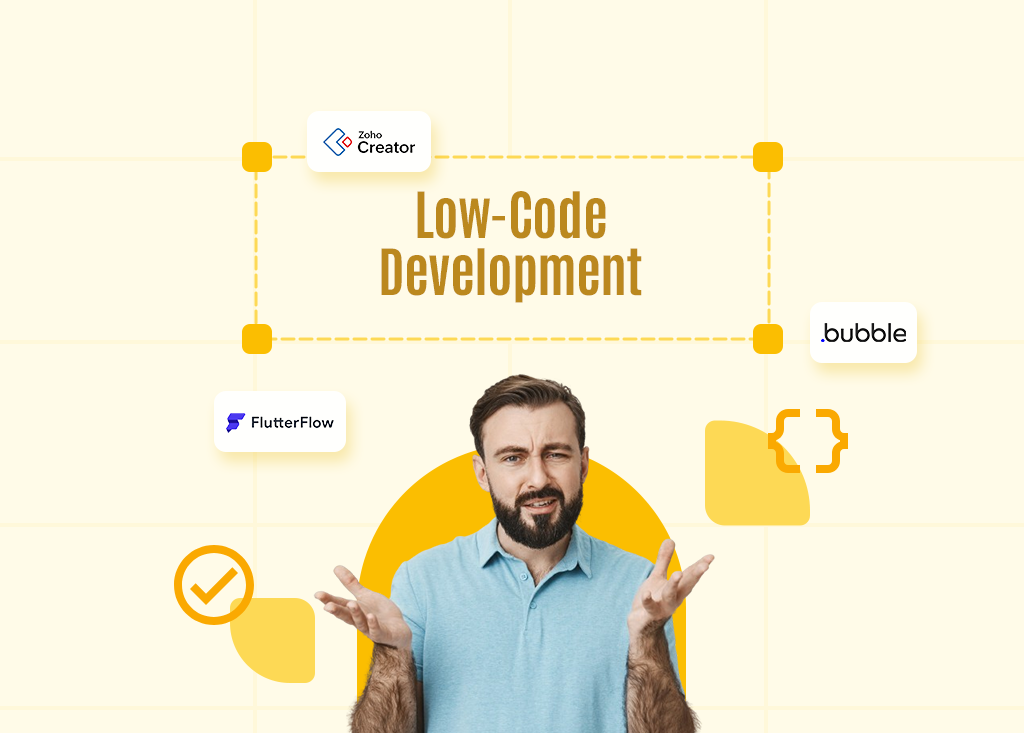
Choosing the right low-code development platform depends on your requirements and existing resources.
Zoho Creator is best for businesses that need to rapidly build functional applications with a focus on business logic and workflow automation. And if they’re already in the Zoho ecosystem, then it’s icing on the integration cake.
Meanwhile, Flutterflow is the go-to choice for developers looking to create visually appealing, cross-platform mobile apps. Its integration with Firebase makes it a strong choice for applications that need real-time data handling and scalability.
Finally, Bubble.io is perfect for app development that requires maximum flexibility and customization in their web applications. While it comes with a higher price tag, the platform’s powerful features do allow highly tailored solutions.
Each platform has its strengths. Whether you choose Zoho Creator, Flutterflow or Bubble, what’s certain is that you will get the tools necessary to bring your ideas to life without writing a single line of code.
Need help with choosing the platform that best works for you? Contact ClixLogix, we have expertise with all three platforms and can guide you so you can get more bounce for the ounce.
Akhilesh is a passionate tech lead at Clixlogix, bridging the gap between code and clarity through technical content.